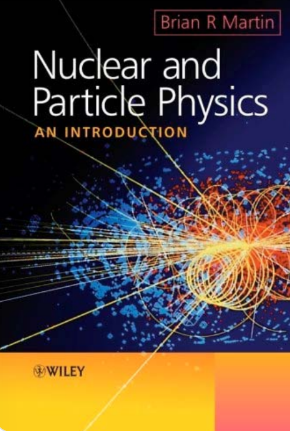Nuclear and Particle Physics

- Author: B. R. Martin
- Language: ingliz tilida
- Writing: ingliz yozuvida
- Publisher: John Wiley & Sons
- Year: 2006
- Views: 257
It is common practice to teach nuclear physics and particle physics together in an introductory course and it is for such a course that this book has been written. The material is presented so that different selections can be made for a short course of about 25–30 lectures depending on the lecturer’s preferences and the students’ backgrounds. On the latter, students should have taken a first course in quantum physics, covering the traditional topics in non-relativistic quantum mechanics and atomic physics. A few lectures on relativistic kinematics would also be useful, but this is not essential as the necessary background is given in appendix B and is only used in a few places in the book. I have not tried to be rigorous, or present proofs of all the statements in the text. Rather, I have taken the view that it is more important that students see an overview of the subject which for many – possibly the majority – will be the only time they study nuclear and particle physics. For future specialists, the details will form part of more advanced courses. Nevertheless, space restrictions have still meant that it has been necessary to make a choice of topics covered and doubtless other, equally valid, choices could have been made. This is particularly true in Chapter 8, which deals with applications of nuclear physics, where I have chosen just three major areas to discuss. Nuclear and particle physics have been, and still are, very important parts of the entire subject of physics and its practitioners have won an impressive number of Nobel Prizes. For historical interest, I have noted in the footnotes many of the awards for work related to the field.